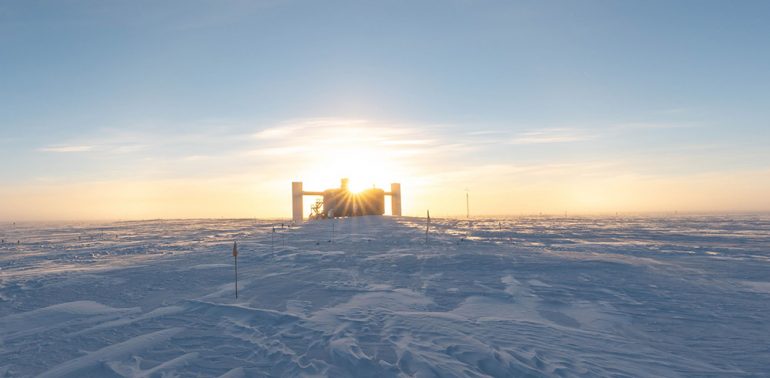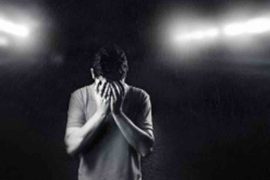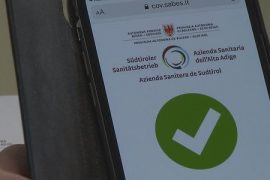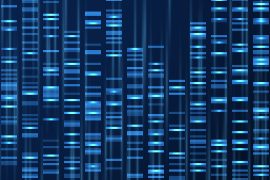Doubly limited: Two neutrino observatories provide data that further narrows the space for particles and interactions beyond the Standard Model. With the Microbuon experiment in the United States, physicists found no trace of a fourth type of neutrino, the hypothetical sterile neutrino. The IceCube detector at the South Pole strongly limits non-standard interactions of neutrinos to all five possible parameters.
Neutrinos are among the most intriguing particles in the physical Standard Model: they hardly interact with matter, have almost no mass and can transform into one another. In addition, neutrino detectors keep recording deviations from expectation: some particle tracks are surprisingly high in energy, others point to as-yet-known types of neutrinos or new types of interactions. Physicists could also find evidence of symmetry breaking between matter and antimatter in “ghost particles.”

The problem, however: so far, none of the deviations has been clear enough to be able to prove the existence of a fourth type of neutrinos or interactions that go beyond the standard model of physics. For this reason, among other things, several teams of physicists have specifically discovered such non-standard interactions and oscillations in recent years.
MicroBooNE: nothing in sterile neutrinos
Physicists used the MicroBuNE experiment at Fermilab in the United States to look for evidence of a fourth type of neutrino. There, muon neutrinos are analyzed for their conversion into other types of neutrinos. The slight excess of electron neutrinos after the measurement section had recently raised questions there. That’s why researchers from the MicroBooNE Collaboration have now re-examined data from the first three years of the experiment in four separate studies to find possible traces of sterile neutrinos.
RESULTS: “We have done a very extensive study of many types of neutrino interactions. Everyone tells us the same thing: there is no evidence for the existence of sterile neutrinos,” reports Michel Weber from the University of Bern. “Now we are at large can rule out the most likely explanation for the discrepancies and investigate other – more complex and perhaps more interesting – possibilities.”
IceCube: a look at atmospheric neutrinos
Physicists from the IceCube collaboration were also looking for neutrino interactions that could not be explained with the Standard Model. To do this, they used DeepCore, a special region of neutrino detectors embedded in the ice of the South Pole, in which the detectors are arranged particularly densely. This part of IceCube primarily reacts to low-energy atmospheric neutrinos.
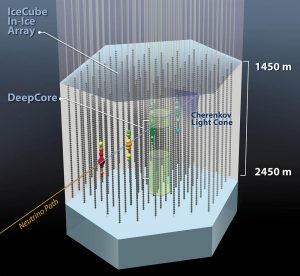
“Atmospheric neutrinos provide us with an excellent opportunity to test whether neutrino interactions exist beyond the Standard Model, as neutrinos fly through Earth, including their center, which has a very high density of matter, Alyssa Lohfink from the University of Mainz explains. If there were non-standard interactions between neutrinos and matter, this could be demonstrated by five different parameters, including oscillations. In total, the analyzes were based on approximately 48,000 neutrino events with energies between 5.6 gigaelectron volts and 100 gigaelectron volts.
Nonstandard interactions are limited
The physicists succeeded in restricting the still conceivable regions to potential neutrino interactions beyond the Standard Model, not only for each parameter individually, but for all five combined. “As far as we know, there is no other experiment in the world that can do this with one measurement,” says Sebastian Bowser of the University of Mainz. “In this way we can test an unprecedented range of models for new physics in the neutrino field.”
Overall, these new results, presented at a recent conference, mean that “new physics” in the form of a new type of neutrino or neutrino interaction cannot be ruled out. But the space for this is shrinking and the prospects for testing continue to improve. (Physical Review Papers, submitted; Physical Review D, 2021; doi: 10.1103/PhysRevD.104.072006)
Source: University of Bern, University of Menzou

Web guru. Amateur thinker. Unapologetic problem solver. Zombie expert. Hipster-friendly travel geek. Social mediaholic.

